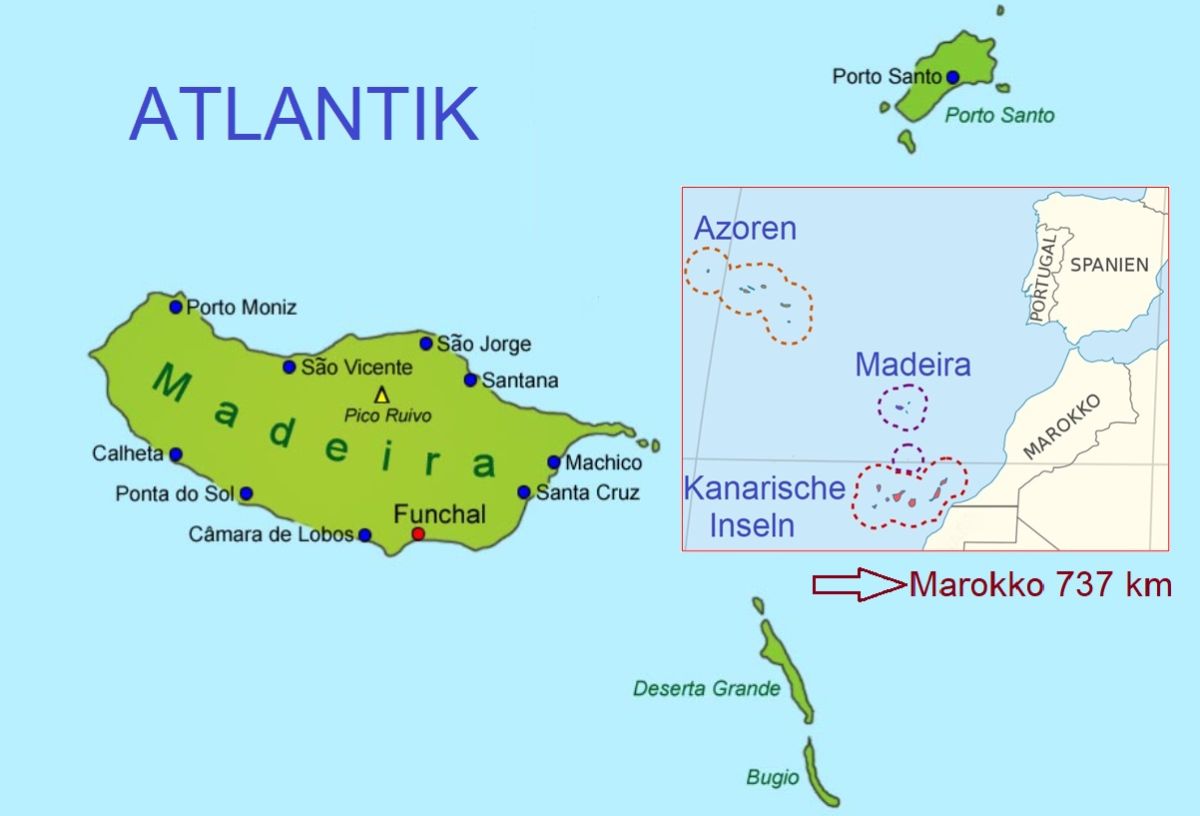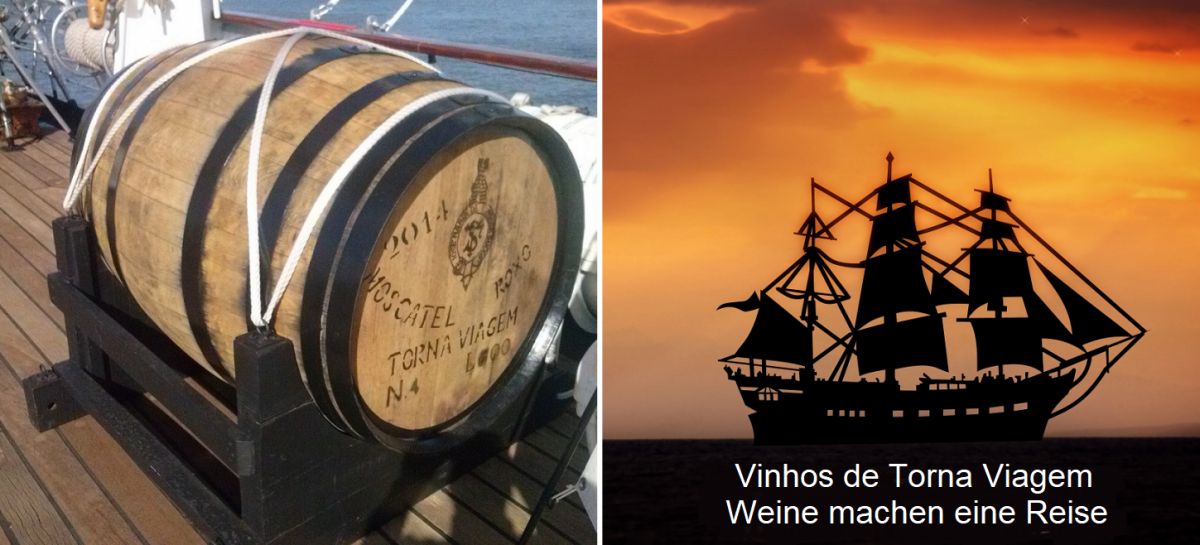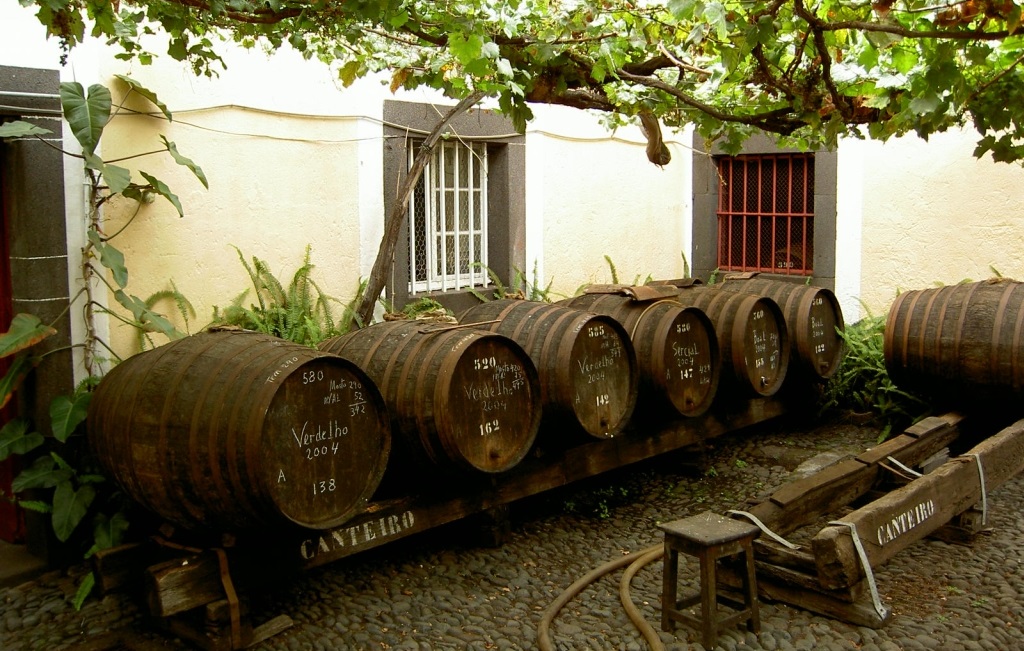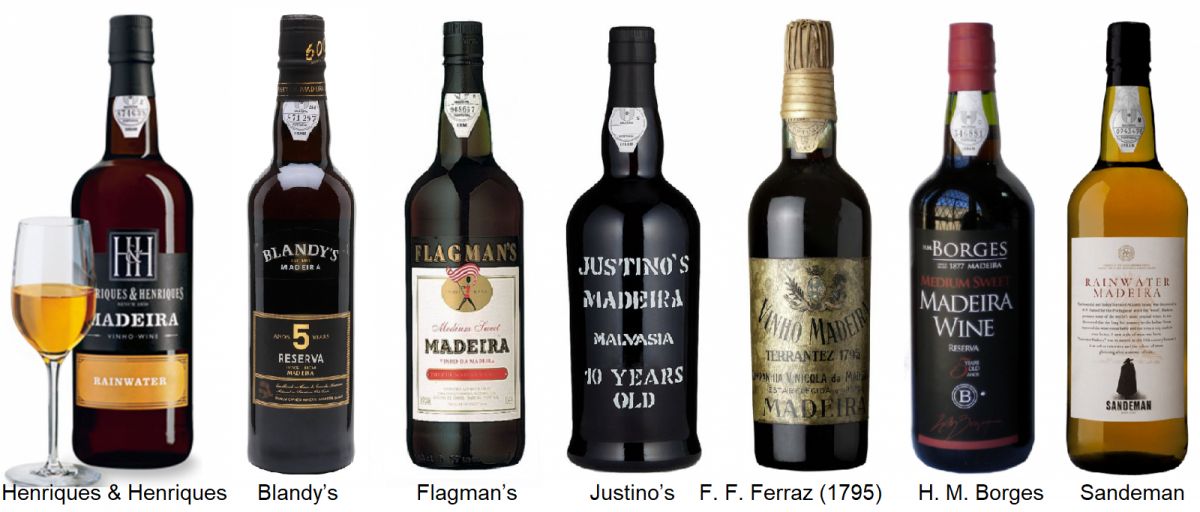Results
2,284 Results
Loading more Results ...
Loading more Results ...
Wine regions in Madeira 3 growing regions
Description to Madeira
The Portuguese archipelago of Madeira, with its capital Funchal, covers a total of 801 km². It is located in the Atlantic Ocean 550 km north of the Canary Islands, which belong to Spain. Madeira is 951 km from the Portuguese mainland and 737 km from the coast of Africa(Morocco). 1,183 km to the north-west is the archipelago of the Azores, which also belongs to Portugal.

The largest island, Madeira (741 km²), together with the island of Porto Santo (42.5 km²) and the uninhabited archipelago of IlhasDesertas (14 km²) form the Madeira archipelago, as well as the Autonomous Region of Madeira, which also includes the uninhabited Ilhas Selvagens. The entire island has a medium to high mountain character. The cliffs drop up to 4,000 metres below the surface to the seabed. The highest peaks rise up in the centre of the island; the highest mountain is Pico Ruivo at 1,862 m. Madeira was formed in several volcanically active phases and consists of jagged volcanic rock, especially on the coast.
History
It was discovered in 1420 by the navigator João Gonçalves Zarco (1380-1467), who found a densely forested island (Madeira means "island of the forest"). The Portuguese set fire to the island and the fire raged for seven years. Although this destroyed almost all the vegetation, the wood ash and the already existing volcanic soil created ideal conditions for viticulture. At the end of the 16th century, commercially significant viticulture is documented. The harbour in Funchal quickly developed into a strategically important stopover for all ships on their way to Africa, Asia and South America. This is also where the ships were supplied with wine. However, these usually spoilt on the long sea voyages. For this reason, spirits distilled from sugar cane were gradually introduced to preserve the wines in particular. However, this only became the norm in the middle of the 18th century.
It is not known for certain when the famous Madeira dessert wine of today's style was created, but there is a report of one in 1478. In this year, George Plantaganet Duke of Clarence (1449-1478), brother of the English King Edward IV (1442-1483), was sentenced to death for conspiratorial activity, greed and violence. He was given the choice of execution and allegedly decided in favour of death by drowning in a barrel filled with malmsey in the Tower. However, it is possible that the "drowning" refers to the fact that he was a heavy drinker throughout his life. In any case, he was not killed by beheading, the usual method of execution for noblemen, as a later exhumation proves.
Vinhos de Torna Viagem
The special method of production, also known as Madeirisation due to its typical taste and colour, came about by chance in the 17th century when large quantities were exported by ship from Funchal to South America and other colonies by the Dutch. It was realised that the longer the journey took and the longer the ship spent in a hot, tropical climate, the better the wine became. The rocking motion of the ship (as was assumed at the time) but above all the extreme temperature fluctuations contributed to the typical flavour. For this reason, many ships were loaded with wine and sent to the East Indies and back for the sole purpose of production (thus crossing the equator twice). The wines were called "Vinhos de torna-viagem" (wines make a journey) or "Vinho da roda" (roda = to turn/rotate) and is also documented on the labelling of old Madeira bottles (TVE).

The impetus for trade in Madeira came in the late 17th century, when large quantities of wine were needed for the new Portuguese colonies in South America (Brazil). The colonisation of America in the 17th century under the rule of the English King Charles II (1630-1685) also brought Madeira into fashion on the East Coast of North America. It enjoyed a great reputation there and became a coveted and expensive object. The American Declaration of Independence in 1776 was solemnly sealed with a Madeira. The first US President George Washington (1732-1799) enjoyed a Madeira every day with dinner. The founding of Washington D.C., the capital city named after him, was also celebrated with a Madeira. In the 19th century, the wine was so popular in the USA that special events (Madeira parties) were held and clubs were founded (the Madeira Club of Savannah-Ohio, which still exists today, is legendary).
Wine-growing areas
The wine-growing area covers 500 hectares of vineyards and is divided into three sub-zones. These are Câmara do Lobos, São Vicente and Santana. The IGP area Terras Madeirenses (country wines), which covers the entire region, is hardly utilised. The DOC wines (quality wines) are categorised under different designations:
- Madeira - for fortified wines (the classic Madeira)
- Madeirense - for non-sparkling wines and sparkling wines (both make up less than 10% of production)
Climate & Soil
The climate is influenced by the Gulf Stream. In the north there is frequent rainfall, whereas in the south it is subtropical. The prevailing wind comes from the north-east and causes high humidity, which means there is a risk of fungal diseases and rot. The average daily maximum temperature varies between 19 °Celsius in January and February and 26 °Celsius in August and September. The levadas (open irrigation systems), which have been in place since the 15th century, carry water from the rainier north to the south, to the plantations and also to the vineyards. The entire island is of volcanic origin, which is why the basalt and tuff soils are rich in organic material.
Madeira production
The wine regulations are under the supervision and control of the IVBAM Institute (Instituto do Vinho, do Bordade e do Artesanato da Madeira), which also runs a museum. This emerged from the Junta Nacional do Vinho (the so-called Wine Council) in 1979. This includes the conditions for vineyard management (grape varieties, grape harvest) and winemaking(fermentation, ageing in barrels or estufa, right through to bottling).
Grape varieties
In the past, four grape varieties were considered "noble", each representing a particular style and degree of sweetness: Sercial, Verdelho, Boal (Malvasia Fina) and Malvasia (Malvasia Branca de São Jorge and Malvasia Cândida). These also designate Madeira types and are listed on the label (see below). All wines where the variety is indicated on the label must contain at least 85% of this variety. However, many high-quality wines are made from 100% pure varietals of the specified variety. According to the new rules, there is a distinction between "authorised" and "recommended" grape varieties.
The authorised grape varieties are(bold = noble):
- Caracol (white)
- Carão de Moça = Folgasão (white)
- Complexa (red)
- Deliciosa (red)
- Listrão Roxo (rosé)
- Malvasia Branca de São Jorge (white)
- Moscatel Graúdo = Muscat d'Alexandrie (white)
- Rio Grande (white)
- Triunfo (red)
- Valveirinha (white)
The recommended grape varieties are(bold = noble):
- Bastardo = Trousseau Noir (red)
- Boal = Malvasia Fina (white)
- Malvasia Cândida (white)
- Malvasia Cândida Roxa = Malvasia di Sardegna Rosada (rosé)
- Sercial (white)
- Terrantez = Terrantez da Madeira (white)
- Tinta = Vinhão (red)
- Tinta Negra Mole = Negramoll (red)
- Verdelho (white)
- Verdelho Tinto (red)
Tinta Negra Mole (Negramoll) dominates 80% of the vineyards cultivated by around 4,000 winegrowers. The vines are traditionally grown on low pergolas on terraces, which means that the grapes have to be harvested bent over or kneeling down.
Vinification
The grapes are then crushed. Fermentation takes place in 25,000-litre wooden or concrete vats, usually using mash fermentation for the Malvasia and Boal types; for the Sercial and Verdelho types, the must is separated from the skins beforehand. Wines made from Sercial and Verdelho are usually vinified dry. Wines made from Malvasia are stopped at an early stage and those made from Boal are stopped halfway through fermentation with 96% aguardente(brandy). The Estufagem technique is used almost exclusively for Madeira and makes it unmistakable. This is the heating of the wine, to which it used to be exposed naturally on voyages across the equator. Huge, tiled concrete tanks or Innox tanks (stainless steel) with a volume of 20,000 to 50,000 litres are used for mass production. A heating coil with hot water running through it heats the wine to 40 to 50 °C for at least three to six months.
Production variant with heating
In the second, much more complex but gentler method, the wine is filled into typical 600-litre barrels (lodge pipes) and stored in heated rooms at slightly lower temperatures. In this case, it is usually six to twelve months. However, some producers refuse to heat the wine artificially. They store the barrels under the roofs of the lodges in the canteiros (storage racks for the barrels), where they are naturally heated by the sun, cooled down again at night and thus exposed to extreme temperature fluctuations compared to the other variants. Wines matured in this traditional way on the island (not by travelling by ship) used to be known as "Vinho canteiro". In all cases, the sugar contained in the wine is partially caramelised by heating. This gives the wine its typical flavour and, through strong oxidation, the Madeiran hue. After estufagem (heating), the wine must be carefully cooled. The age of the wine is calculated from the end of the estufagem phase.
Estufagem process
The costly production by ship was still practised until the beginning of the 20th century, but was then abandoned (individual bottles are still on the market). Attempts were now made to imitate the special conditions. Wine warehouses (port. estufa = oven, English: hothouse) were built, fitted with tin roofs to store heat from the sun and the wine was stored at high temperatures for months. This was the beginning of the estufagem process used today. In the 1860s, mildew and phylloxera reached the island and paralysed viticulture. In the 1870s, many vineyards were replaced by sugar cane, leaving just under 500 hectares. Ten years later, a new start was made with ungrafted hybrids(Cunningham and Jacquet). However, these were banned for Madeira as early as 1979.
Spriting
Depending on the form of fermentation described above, some wines are fortified for the first time at this point, while sweet wines may be fortified for the second or third time. This results in an alcohol content of around 17% vol. There are two types of sweetening for sweet Madeira wines. In the better wines, this is done by interrupting fermentation as mentioned above, while in the cheaper wines, thickened sweet must (Vinho Surdo) is added after fermentation and the colour is also corrected by adding caramel. After filtration, the wine rests for 12 to 18 months and is then categorised according to quality.
Quality levels according to ageing period
After racking into wooden barrels, further ageing takes place. From Estufagem onwards, this is at least three years and is labelled "Finest" or "3-Year-Old". A "Seleccionado" is at least three, but no more than five years old. An "Alvada" is a blend of several varieties that is at least five years old and is marketed in 0.5-litre bottles. The minimum age for wines from the noble varieties is five years, these are the "Reserve" or "5-Year-Old" wines. The "good" wines start from "Special Reserve" or "10-Year-Old". Further ageing levels are "Extra Reserve" or "Over 15-Years-Old", "20-Years Old", "30-Years Old" and "Over 40-Years-Old". The "Vintage Madeira", which matures for at least 20 years in the barrel and two years in the bottle, is considered the finest.
In all variants, Madeira can be enjoyed immediately when it is sold. Madeira develops much less sediment (compared to port wine, for example) and only very old wines need to be decanted (if at all). It is considered to be the longest-lived wine in the world and continues to improve with further ageing. There are still (extremely expensive) vintages from the end of the 19th and beginning of the 20th century on the market today that show no impairment of enjoyment. Even an opened bottle can be kept almost indefinitely.
Vintage indication
The following information and types are available for a "real" vintage Madeira (vintage Madeira) or for Madeira wines with a year stated on the label:
Colheita
This type of wine has only been produced for a few years and corresponds to the Colheita in port wine. It is made from at least 85% of the same vintage. The wine matures for at least five to a maximum of twenty years.
Solera
The year in which the solera was "opened" (started) is indicated on the label. This means that in addition to the stated vintage, younger vintages are also included due to the blending of vintages. However, the system introduced here in the 19th century (as with sherry) is hardly ever used for Madeira any more.
Vintage (Frasqueira) and Harvest Vintage
This genuine vintage wine comes 100% from a grape harvest. It matures for at least 20 years in the barrel and two years in the bottle. A new type of wine is "Harvest Vintage" with 5 to 10 years of ageing, but it is not necessarily suitable for longer storage over decades.
Degree of sweetness
The specifications for the residual sugar content apply to all Madeira types. The sugar content(must weight) varies from grape variety to grape variety. It is indicated in Baumé degrees (degree = Portuguese grey).
Type |
Grape variety |
Sugar content
|
sugar
|
sugar
|
sugar
|
| extra dry / extra seco / extra dry | Sercial | - | - | 0,5 | 49 |
| dry / seco / dry | Sercial | - | - | 1,5 | 65 |
| medium dry meio seco / medium dry | Verdelho, Terrantez | 1 | 57 | 2,5 | 80 |
| semi-sweet / meio doce / medium sweet | Boal (Malvasia Fina), Terrantez | 2,5 | 80 | 3,5 | 96 |
| sweet / doce / sweet | Malvasia (Malvasia Branca de São Jorge) | 3,5 | 96 | - | - |
| permitted in all sweetness levels | Tinta Negra Mole (Negramoll) | - | - | - | - |
Madeira types
The names of the four noble grape varieties, as well as the rare Terrantez da Medeira variety, appear on the label and also stand for a certain Madeira style or residual sugar content.

Bastardo, Moscatel and Terrantez
These three types of wine are now only produced in small quantities. The last time a Moscatel was produced was in 1900. Only around 500 litres of Terrantez wine are produced each year. It is characterised by a bitter finish and an ashy aroma of burnt coffee. Older vintages regularly fetch fantastic prices at auctions; the 1789 and (from Barbeito) 1795 vintages are legendary. Efforts are being made to revitalise the Bastardo and Terrantez types.
Tinta Negra Mole (Negramoll) - all sweetness levels
This type of Madeira is made from the Tinta Negra Mole (Negramoll) variety. This is responsible for the decline in quality and image of Madeira in the 19th and 20th centuries, which was often only known as a simple cooking wine. These simple wines make up around half of the production. The wine can be produced in all sweetness levels.
Bual (Boal) - semi-sweet
This type of Madeira is significantly darker than Sercial or Verdelho. The Boal (Malvasia Fina) variety is mainly grown on the warmer southern side of the island and is also used as table grape. The golden-coloured wine is characterised by a typical aroma of sultanas, limes, caramel, coffee, oranges and apricots with a fresh acidity, even with age.
Malmsey (Malvasia) - sweet
The sweetest and most complex type of Madeira is considered the best. It is mainly made from the Malvasia Branca de São Jorge variety and sometimes also Malvasia Cândida. These grow in the lowest and warmest areas of the island, particularly around Câmara de Lobos. The lusciously sweet wine with a honey, coffee, vanilla and caramel flavour nevertheless does not taste sticky due to a concise, balancing acidity. This wine can be kept for a hundred years or more.
Sercial - dry
This astringent wine with a pale colour is the driest Madeira type. The Sercial variety is grown at cooler altitudes and on the north side of the island and therefore rarely matures. The wine is hardly drinkable when young due to its acidity and therefore requires a long ageing period. An almond flavour develops after at least ten years of ageing.
Verdelho - semi-dry
This type of Madeira is characterised by a delicately bitter, nutty taste with aromas of dried fruit, honey, coffee and chocolate. The Verdelho variety is grown on the north side of the island, but ripens better than Sercial. Even with age, it retains a piquant acidity, whereby the golden yellow colour develops from golden yellow to a darker shade.
Rainwater - semi-dry
This special type of wine can also be described as a milder and lighter Verdelho. There are several versions of the origin of the name of this at least historically interesting wine. One says that it was made from vines where no artificial irrigation was possible and thus there was a dependence on rainwater. The second version reports that in the 18th century, several Madeira barrels were exposed to rain for a long time on the sea route to America, the water was absorbed by the wood and ended up in the wine. However, an American named Habisham is also named as the intentional "inventor". In any case, this semi-dry, light wine was a favourite in the USA and became an export hit. This type of wine was produced for 200 years, for example by Cossart Gordon. Today, it is only produced in small quantities, mostly from the Tinta Negra Mole. However, its production is only very vaguely defined.

Setúbal
A very similar dessert wine is Setúbal, which is produced on the Portuguese mainland.
Producers
Well-known producers and trading houses or Madeira brands are Barros Almeida & Co, Artur de Barros e Sousa, Barbeito, Blandy's, H. M. Borges, Broadbent Selections, Companhia Vinicola da Madeira (CVM), Cossart Gordon, Duke of Clarence, F. F. Ferraz, Flagman's, Funchal Wine, Henriques & Henriques, Justino Henriques, Leacock, Miles (Rutherford & Miles), Pereira d'Oliveira Vinhos (AO-SM = Anibal d'Oliveira, Sao Martinho), Power Drury, Sandeman and Silva Vinhos. Some are no longer produced today, but there are still very old vintages on the market due to the extreme longevity of Madeira. The Madeira Wine Company (to which some of the brands listed belong) is majority-owned by Blandy and Symington.
Further information
For the production of alcoholic beverages, see Champagne (sparkling wines), Distillation (distillates), Speciality wines, Spirits (types), Winemaking (wines and wine types) and Wine law (wine law issues). All work and aids in the vineyard during the vegetation cycle are listed under vineyard care.
Small map: by User: ArnoldPlaton, User:MacedonianBoy, User:DK2EO - Own work, CC BY-SA 3.0, Link
Madeira barrels: CC BY-SA 2.0 en, Link
Source/information: Joachim A. J. Kaiser, graduate biologist
find+buy for Madeira 16
Recent wines 3
 Vinhos Justino Henriques, Filhos, Lda
— Madeira
Dry Fine Dry
89 WP
very good
Vinhos Justino Henriques, Filhos, Lda
— Madeira
Dry Fine Dry
89 WP
very good
